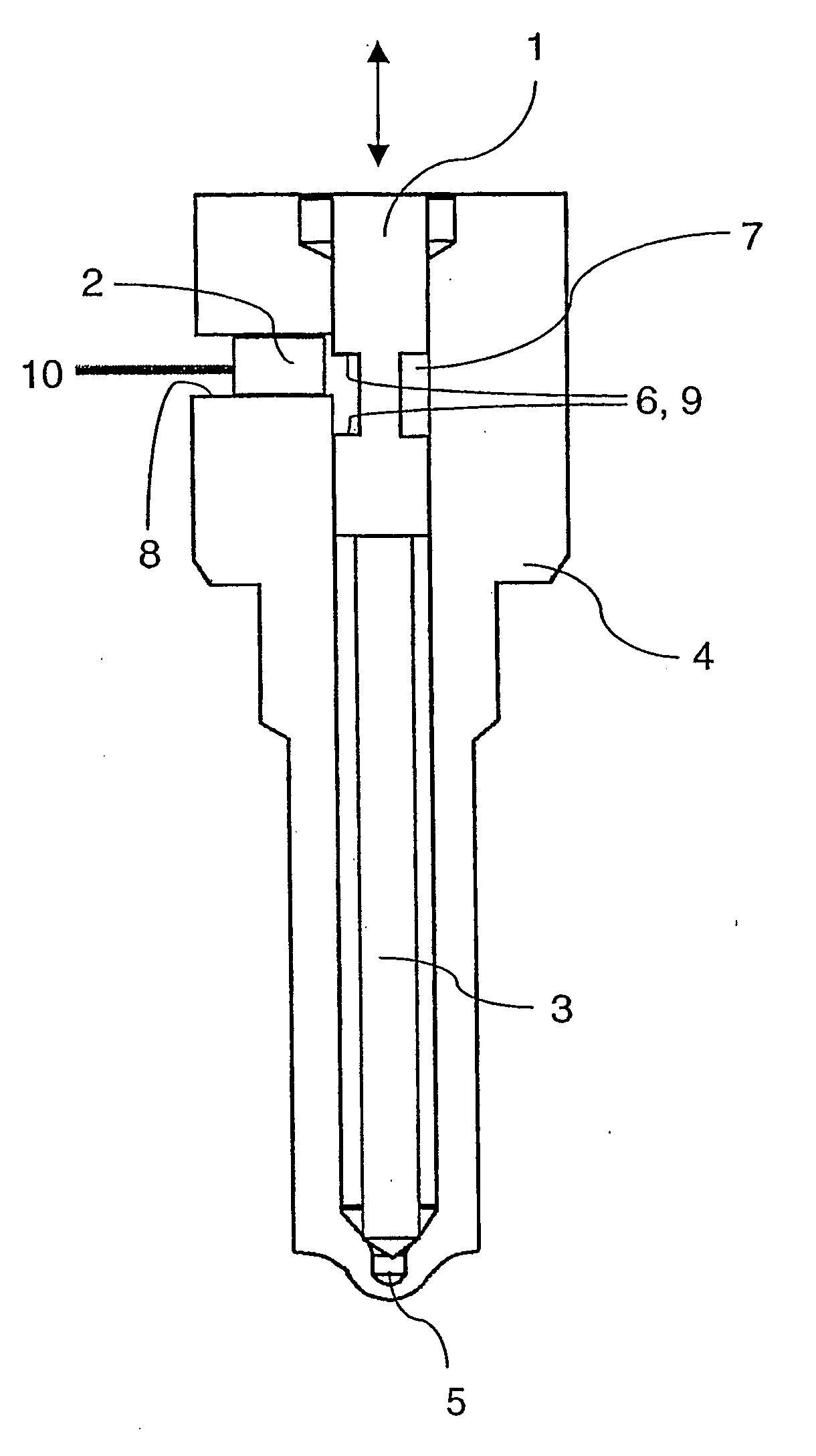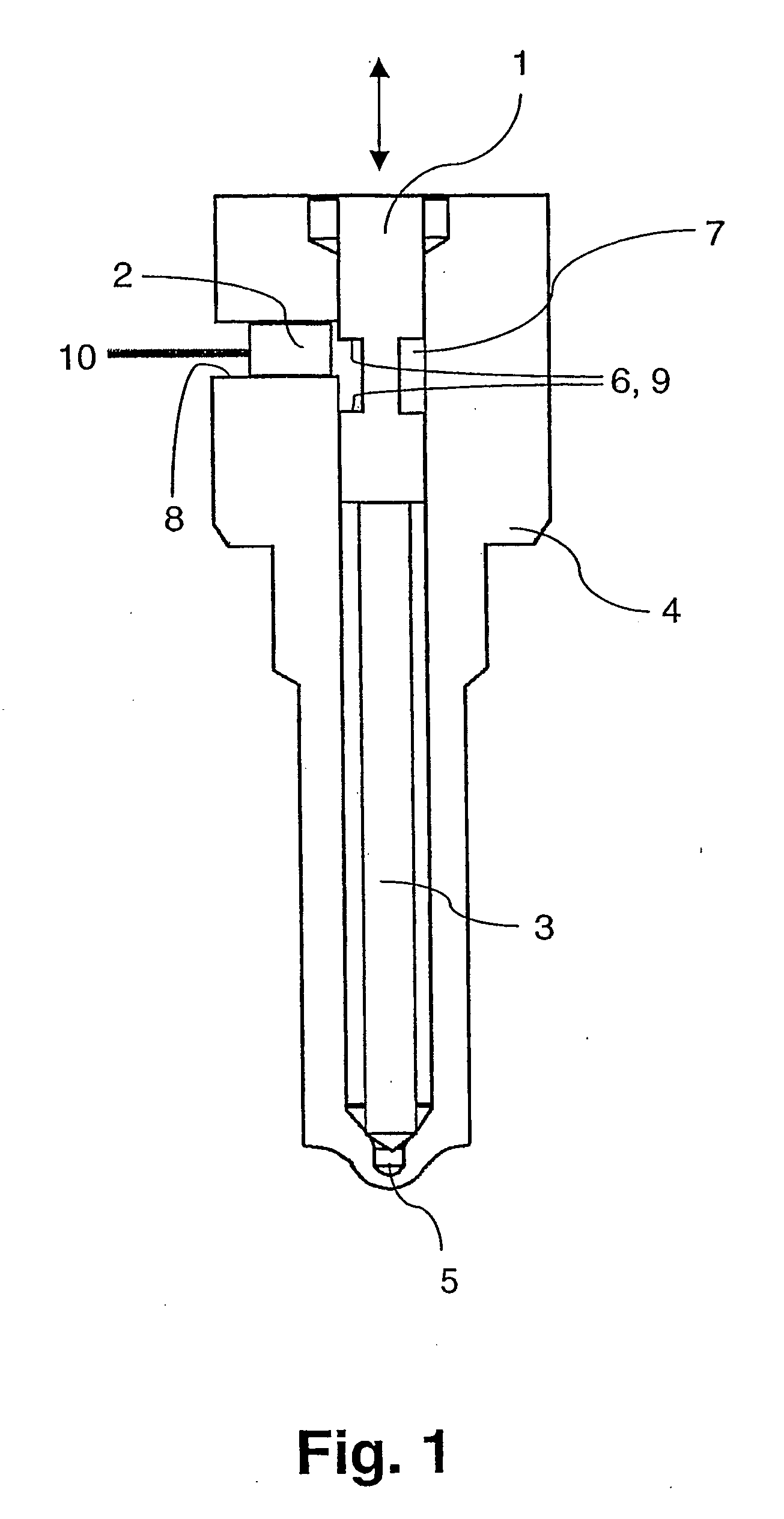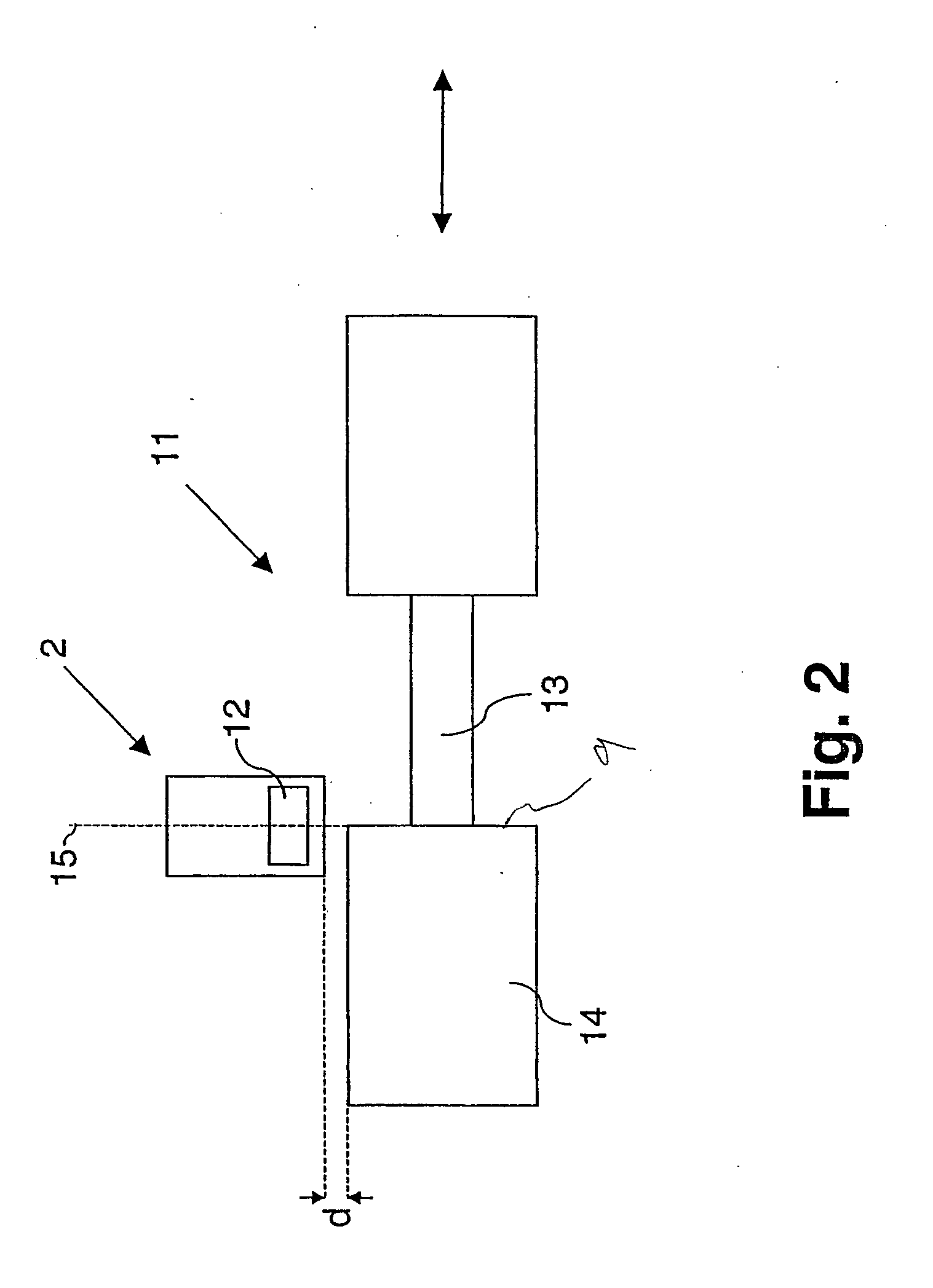Measuring device and method for determining the position of an electrically conductive test object
a technology of measuring device and test object, which is applied in the direction of instruments, structural/machine measurement, relays, etc., can solve the disadvantages of many applications of extending a linearly reciprocating test object with a sensor, and achieve the effect of significantly increasing temperature stability
- Summary
- Abstract
- Description
- Claims
- Application Information
AI Technical Summary
Benefits of technology
Problems solved by technology
Method used
Image
Examples
first embodiment
[0023]FIG. 1 illustrates a schematic side view of a measuring device according to the invention for determining the position of an electrically conductive test object 1. The device comprises an eddy current sensor 2 which is arranged transversely to the direction of movement of the test object 1. The direction of movement of the test object 1 is indicated by a double arrow. Specifically, the movement is the reciprocal movement of an injector needle 3, which mechanically connects to the test object 1. The injector needle 3 forms a part of a fuel injector 4 and releases at a defined time interval a nozzle opening 5, so that fuel is allowed to enter the combustion chamber at a high rate.
[0024] To determine the actual position of the injector needle 3, the test object 1 is provided in accordance with the invention with a marking 6, which is formed as a groove 7 that annularly surrounds the test object 1. In accordance with the invention, an eddy current sensor 2 is oriented transversely...
second embodiment
[0028]FIG. 2 schematically illustrates a side view of the measuring device according to the invention. The arrangement is basically similar to that of FIG. 1, with like numerals indicating like components. Unlike FIG. 1, the embodiment of FIG. 2, however, does not determine the position of an injector needle, but the position of a servo-valve 11. The servo-valve 11 performs linear movements in the direction indicated by the double arrow. In accordance with the invention, the eddy current sensor 2 with a measuring coil 12 is arranged transversely to the direction of movement of the servo-valve 11 at a constant distance d. The marking toward which a measurement is performed, is defined by the edge 9, which is formed by a transition from a valve stem 13 to a valve housing 14. In the basic position, the edge 9 extends exactly along a center axis 15 of the measuring coil 12. The measuring method for monitoring the valve position is analogous to the method described in connection with FIG...
PUM
 Login to View More
Login to View More Abstract
Description
Claims
Application Information
 Login to View More
Login to View More - R&D
- Intellectual Property
- Life Sciences
- Materials
- Tech Scout
- Unparalleled Data Quality
- Higher Quality Content
- 60% Fewer Hallucinations
Browse by: Latest US Patents, China's latest patents, Technical Efficacy Thesaurus, Application Domain, Technology Topic, Popular Technical Reports.
© 2025 PatSnap. All rights reserved.Legal|Privacy policy|Modern Slavery Act Transparency Statement|Sitemap|About US| Contact US: help@patsnap.com



